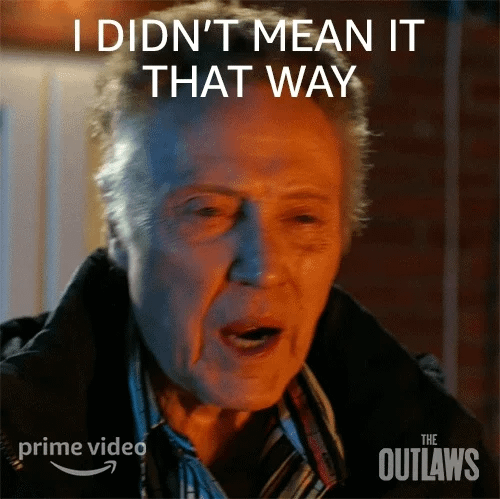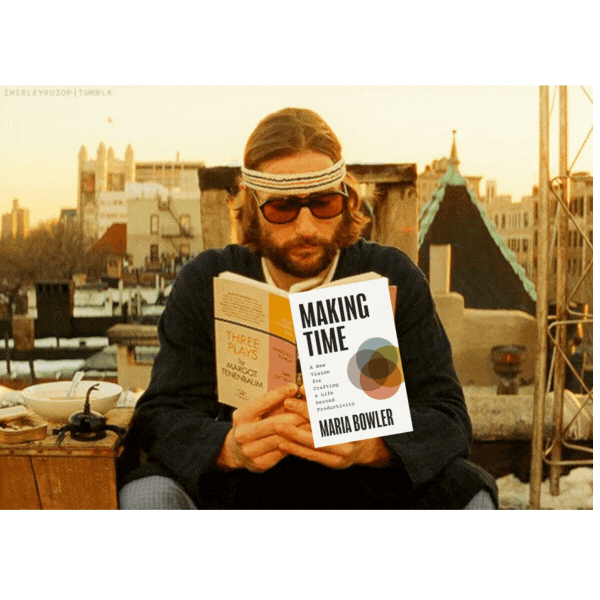Hello Maker,
Welcome to another edition of the Anti-Advice Column — where I promise no neatly packaged solutions nor foolproof formulas. Instead, it’s the kind of thing where you ask your burning questions, and I ask questions right back. Because the answers that emerge from your own wisdom will serve you best.
Hit reply to send me your questions.
This week’s reader question:
“How do I cope with the potential of being misunderstood? People can interpret art in many ways.”
Being misunderstood can really sting. There’s no way around it. It tends to bring up stuff like “I don’t belong as I am. I am disconnected from the world.”
Especially when you’ve put your sincerest thinking into something, and someone comes back with, “Oh, so you’re saying this?” and this is a universe away from what you had in mind.
T.S. Eliot put it best in “The Love Song of J. Alfred Prufrock”: “That is not what I meant at all; that is not it, at all.” (A fun, pertinent fact: this poem is super famous now, but almost went unpublished. A professional editor called it “absolutely insane” and turned it down.)
The bad news is, trying to avoid misunderstanding works against you. Ironically, it often makes your work less coherent, not more.
When you twist your brain in knots to anticipate the criticism, answer every question, and leave no room for doubt, you don’t clarify the meaning of the work; you scatter it. The raw aliveness of the thing — the energy that made it yours — gets lost.
So let’s go in the opposite direction. People WILL misunderstand you. As surely as geese migrate for the winter, humans will project their specific questions and personal concerns onto literally anything that crosses their field of vision.
Every priest and pastor friend I have has many stories about shaking someone’s hand after service and hearing feedback on their sermon — except the feedback refers to things they never said. This goes for both criticism and praise.
For example, “I loved when you said [sentiment that was never uttered, nor even occurred to the speaker].” Or “I can’t believe you said [argument the speaker would never make].” And there’s a recording to prove it.
It can be unnerving!
BUT: since there is no rhyme or reason for the ways people will people — that is, project their preoccupations on the world — there’s no point in trying to guess what song they need you to sing.
(Need some encouragement? Go to the YouTube comment section of a song or video you love and read people being wildly wrong about it. Even your favorites get silly feedback.)
The question isn’t how do I stop people from misunderstanding me? The question is what am I willing to be misunderstood for?
Here’s what I mean:
1. Where you’re afraid to be misunderstood is often where your voice is strongest.
Are you more nuanced where others are black-and-white? That’s not a liability; it’s leadership. Are you whimsical where others are serious? What a gift. Lean into the parts of your work that feel risky — they’re risky because they stand out, and what stands out is pointing you to a truth that wants to come through you.
2. Misunderstanding points to where your work challenges the status quo.
If everyone immediately “gets it,” you are probably not forging new territory. That’s not a crime, but being misunderstood is often a sign that you’re creating outside the dominant framework.
3. Where you fear being misunderstood is a part of you that wants to be accepted by YOU first.
Misunderstanding stings the most when it touches a part of you that you haven’t fully embraced yet. It’s not just about wanting others to get it; it’s about wanting to feel at home with yourself. Where are you still holding back from accepting your own voice, your own specificity, your own brand of weirdness?
4. Trying to “fix” misunderstanding kills nuance.
In your desire to clarify, you might smooth over the very thing that makes your work compelling. Nuance takes courage because it refuses to pander. Misunderstanding might sting, but over-explaining steals your depth.
5. Misunderstanding is where dialogue begins.
Your audience doesn’t need to “get it” all at once. Your work isn’t a Red Bull commercial. It’s an intimate, ongoing conversation — and conversations need gaps, silences, and room for back and forth. Misunderstanding isn’t the end of the exchange; it’s the start of it.
6. Misunderstanding helps you clarify your own values.
When someone misunderstands you, it forces you to ask: Is this something I want to stand by? If yes, double down. If no, refine it — not for them, but for you. Misunderstanding can be a compass, showing you where your own convictions need to grow stronger.
7. Misunderstanding creates space for connection in unexpected ways.
A mondegreen is when someone mishears lyrics or words and gives them new meaning — often a meaning the original artist never intended. (Think of all the people who heard Elton John’s “Hold me closer, tiny dancer” as “Hold me closer, ‘Tony Danza.’”)
Your public presence, your work, will have its own mondegreens. People will see and hear things in it that you didn’t put there, and that’s between them and the universe. Misunderstanding, at its best, is a kind of co-creation.
Sometimes, being misunderstood is the best thing that can happen to your work. It gives people the freedom to see themselves in it in ways you didn’t anticipate. Not everyone will read your story as you wrote it, but if they feel moved, they’re still connected to it.
8. What would it mean to welcome misunderstanding?
Not as failure, but as evidence that your work has layers. As proof that you’re reaching people in ways you might never fully see. To welcome misunderstanding means to trust your work enough to let it breathe, stretch, and grow in other people’s imaginations.
So the next time you find yourself cringing at the thought of being misunderstood, take a deep breath and ask yourself:
What part of myself am I afraid to reveal here?
What truth am I standing for, even if it’s hard to explain?
Where is this misunderstanding inviting me to grow as an artist, a thinker, or a human being?
So we can let go of the goal to be understood, and consider the aim to live in ways that are increasingly coherent to you.
Let the work breathe. Let the people do their people thing. Let it be misunderstood if it must, because misunderstanding can be another word for how mystery is working.
Warmly,
Maria
P.S. Guess what? You can go behind the scenes of the launch of Making Time AND start the year off focusing on your creativity, not “New Year, New You.” Join the Maker's Lab — a club for practicing the ideas in the book.
You’ll get exclusive calls with me, early access to the book, and behind-the-scenes updates as we bring this project into the world. Plus, you’ll help this project find the readers it’s supposed to find. Click here to join the club.





This is so good. Being misunderstood is one of my biggest pain points. I am saving this to return to when I need the reminder 🫶🏼
‘Where you fear being misunderstood is a part of you that wants to be accepted by YOU first.’ - Oof! Thank you for amazing food for thought, just like always!